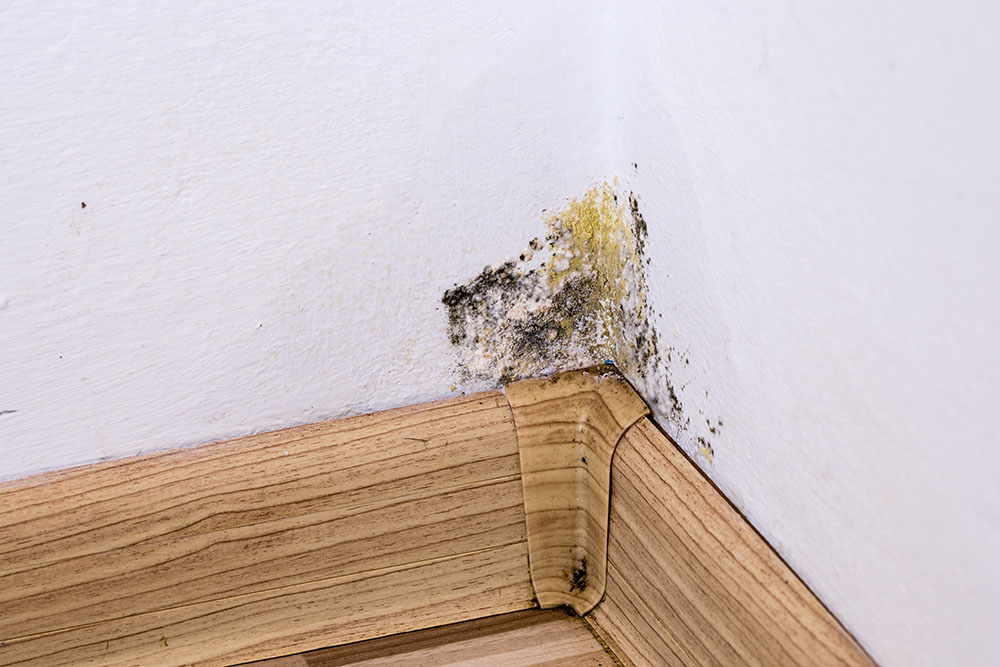What Are Mould Mites?

CONTENTS
- What are mould mites?
- How does mould connect to mites?
- How to identify mould mites
- What are the health risks of mould mites?
- How to prevent mould and mites
- How do you handle a mould mite infestation?
- Frequently asked questions
- Get in touch
Mould mite infestations are a common issue in homes where the air is thick with humidity. Often overlooked, these insects thrive on mould that spreads, inviting further issues that degrade your home. The presence of mould mites in your home might signify a deeper issue.
At ICE Cleaning, our mould remediation services are leading the way against mould infestations in the UK. We utilise leading technology and solutions to effectively find the source of the growth, removing it and ensuring it does not return.
Read in to learn more about mould mites and how to prevent them.
What are mould mites?
The presence of these insects that flourish in damp areas of a household can be alarming. Mould mites feed on fungi and thrive in areas with high moisture content.
While not harmful, mould mites signify excessive mould growth, which can lead to health hazards such as respiratory issues and allergies and can be hard to spot due to their small size.
Mould mites are white with a pale brown cocoon and are hard to detect until a large population is present. Their appearance often indicates an underlying, severe fungal infestation lurking within the property.
Paying attention to the presence of mould mites and addressing the underlying moisture issues they indicate can help prevent potential health hazards.
When encountering what appears to be thick clusters of dust falling from surfaces, it is advisable to investigate further, as there may be an infestation.
How does mould connect to mites?
Mould and mites might seem unrelated, but there is a connection between the two that can impact your home's cleanliness and health.
Mould serves as a primary food source for mould mites, as they thrive in environments where mould is present, creating an unwanted ecosystem in your home.
Their lifecycle begins when they find an environment rich in fungi or mould. Homes with high humidity levels or unresolved water damage offer perfect breeding grounds for these pests.
As mould grows on walls, ceilings, or even on food left out too long, it attracts these mites who feed on it and rapidly reproduce.
How to identify mould mites
The first step in identifying mould mites is through visual inspection. These pests are extremely small, often requiring a magnifying glass to see clearly. They appear as tiny white or tan specks moving slowly on surfaces. Common areas where mould mites may thrive include:
- Kitchens: With ample food supply and moisture from cooking and washing dishes, kitchens offer the perfect habitat for mould mites.
- Bathrooms: The combination of high humidity levels from showers, baths and potential leaks makes bathrooms another hotspot for these pests.
- Basements and lofts: These areas have higher humidity levels and poorer ventilation unlike living spaces, making them ideal breeding grounds for mould, attracting mites.
What are the health risks of mould mites?
Understanding the potential health risks associated with mould mites is crucial for homeowners, landlords, and tenants. One of the most common health issues caused by mould mites is allergic reactions.
These can range from mild symptoms such as sneezing, itchy eyes, or skin irritation to more severe respiratory problems. People with existing allergies or asthma may find their conditions exacerbated when exposed to these pests.
The allergens produced by mould mites can become airborne and infiltrate living spaces, making it vital to address any infestations promptly.
Beyond triggering allergies, exposure to mould mites can lead to more serious respiratory issues. Those residing in environments where these mites are present might experience coughing, wheezing or even develop bronchitis over time due to prolonged exposure.
Respiratory tract infections can also occur due to weakened immune systems battling against continuous exposure to allergens.
How to prevent mould and mites
By controlling humidity, improving ventilation, and maintaining a regular cleaning schedule, you can prevent the growth of mould and mites.
Excessive moisture in your home creates an ideal breeding ground for mould and mould mites. To keep humidity levels in check:
- Use dehumidifiers in high-humidity areas such as bathrooms and kitchens.
- Dry clothes outdoors or use a heated clothes horse.
- Ensure that you have adequate insulation.
Poor ventilation traps moist air inside your property, leading to damp conditions where mould thrives. Enhancing airflow can reduce this risk, including opening windows regularly or installing exhaust fans in areas like kitchens and bathrooms.
Dust accumulation can provide food for mite populations while neglecting wet surfaces can encourage mould growth. To avoid these issues, it is important to establish consistent cleaning practices that manage these before they escalate.
Frequently clean high-moisture areas using anti-fungal products to prevent mould growth. Additionally, vacuum carpets, rugs, and upholstery weekly using a vacuum cleaner equipped with a HEPA filter, which will capture dust allergens effectively.
By adhering to these simple yet effective strategies, you can take significant steps towards maintaining a healthier living space free of mould and mites.
How do you handle a mould mite infestation?
The first step in tackling a mould mite problem is identifying and eliminating the moisture source that allows them to thrive.
This could involve fixing leaky pipes, improving ventilation in damp areas like bathrooms and kitchens, or using dehumidifiers to reduce indoor humidity levels.
By contacting a professional mould removal company, you can eliminate visible mould and begin removing a source of their food source. Cleaning is also crucial when dealing with mould mites, and you can do this by:
- Hoovering regularly using HEPA filters
- Wash fabrics such as curtains or bedding often
- Avoid storing items in damp rooms
If these methods fail or if the infestation seems extensive, it may be time to call in professional mould removal teams. They possess advanced techniques for effectively eradicating pest populations while preventing future mould outbreaks through strategic interventions.
An expert team will also advise on long-term prevention strategies, ensuring your environment remains inhospitable for these pests moving forward.
Homeowners, landlords, and tenants must adopt an integrated approach To maintain a healthy and pest-free living space. This approach should involve moisture control measures, rigorous cleaning routines, and specialist intervention when necessary.
Frequently asked questions
Are mould mites harmful to humans?
Mould mites can trigger allergies and worsen asthma, but they do not bite or transmit diseases directly.
What causes mould mites?
Mould mites thrive in damp environments where their main food source, mould, grows abundantly due to moisture.
How do you get rid of mould mites?
Tackle the root by reducing humidity. Clean affected areas thoroughly. Sometimes, professional help might be needed for severe infestations.
Can mould mites make you sick?
Their presence can aggravate respiratory conditions and cause allergic reactions in sensitive individuals.
Get in touch
For effective mould cleaning services, you can rely on the team at ICE Cleaning. We operate nationwide to ensure customers across the UK can rely on us. We employ state-of-the-art technology and solutions to make your home safe again.
To learn more about our mould removal services, contact us today at 0208 066 0360 or enquiries@icecleaning.co.uk. We can be on-site at your earliest convenience and work closely with you to help you restore your property. We work 24/7, all year round.

Speak with me today,
I’m here to help
By asking you a few questions either via phone or email I can immediately provide a realistic estimation of the cost.

Why choose us?
- Cater to a wide variety of cleaning situations
- Nationwide coverage, available 24/7
- Cater to commercial and domestic clients
- Free survey provided prior to quotation
- Emergency response team
- Offer a bespoke service designed to suit all your needs
- All technicians hold professional health and safety qualifications, including BICSc, IOSH, Dewpoint Professional & Safe Contractor
We’re fully accredited
We place best practise, professional expertise and health and safety at the core of our business. We’re fully compliant with all legal obligations. You can view a list of our accreditations below, or visit our Health & Safety page for more information.











-RGB-small.1707319151.jpg)




















